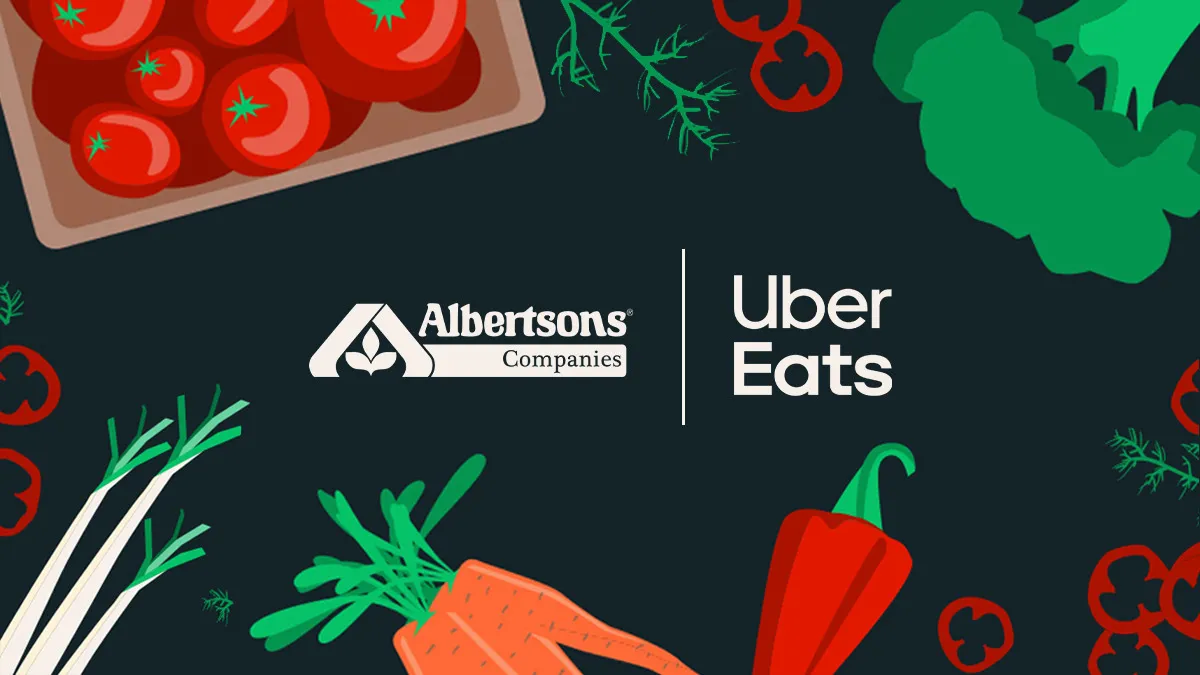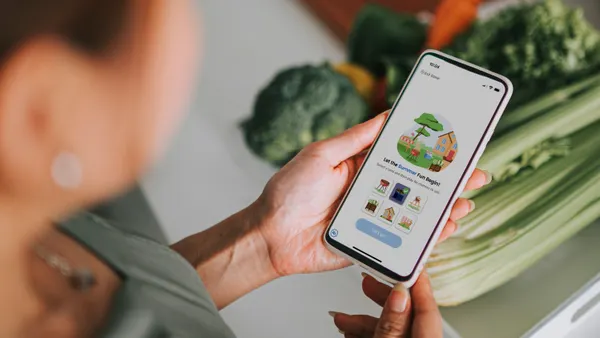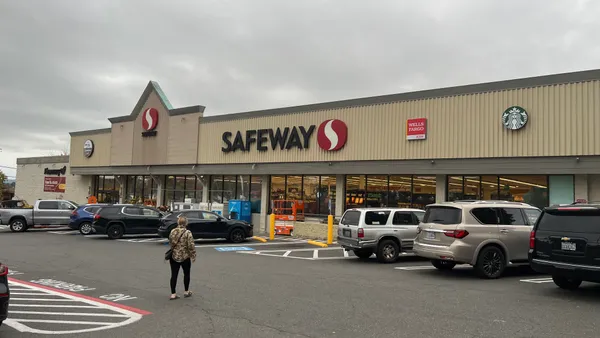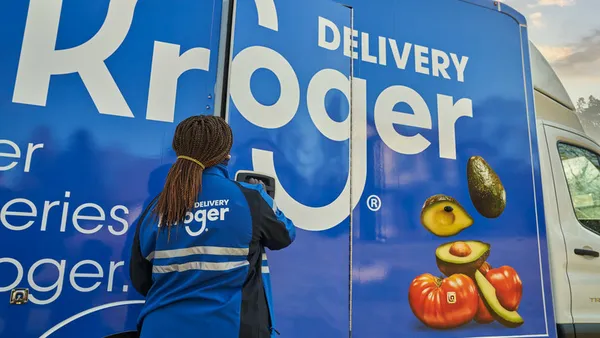Dive Brief:
- Albertsons and Uber announced on Tuesday that they have expanded their delivery partnership to nearly 800 more stores, bringing the total number of locations on Uber Eats to more than 2,000.
- With the expansion, shoppers of Albertsons’ banners in Connecticut, Indiana, New Hampshire, Utah, Vermont and Rhode Island can find the grocer on Uber Eats for the first time.
- Along with Albertsons banners being under the grocery section, customers can now order items from the grocer under the “express lanes” tab within the convenience section of the Uber Eats app.
Dive Insight:
With the expansion to more than 2,000 stores, Uber delivery is available at more than 87% of the grocery company’s fleet of roughly 2,270 retail stores.
As Albertsons and Uber look to grow together, they are taking steps to link the grocer’s loyalty programs with the third-party e-commerce platform.
Later in 2022, shoppers using Uber's platform will be able to tap pricing and promotions designed for members of the programs, according to the announcement. Albertsons customers will also be able to connect their account to the Uber Eats app, allowing them to accrue loyalty points when making purchases through Uber's system.
For Uber, access to Albertsons’ rewards members may help attract customers, while for Albertsons, the partnership expands the variety of e-commerce options its shoppers can take advantage of.
Albertsons and Uber first announced their tie-up last July, making the Idaho-based grocery company the latest partner for the third-party marketplace’s growing grocery business. Albertsons said at the time it was bringing delivery by Uber to more than 1,200 stores across its banners, including Albertsons, Safeway, Jewel-Osco, Acme, Tom Thumb and Randalls.
In late November, Uber said it had expanded its partnership with Albertsons to six new U.S. markets, including Chicago, Baltimore; Reno, Nevada; Tucson, Arizona; and Colorado Springs, Colorado. In that announcement, Uber also noted that the availability of Albertsons stores to shoppers on its apps had tripled since the companies began working together.
Like competitors Walmart and Kroger, Albertsons is making digital and omnichannel investments to reflect its shoppers' preferences. The grocery company is keeping its options open with third-party providers as it works on its e-commerce strategy and also develops its owned digital operations.
In February, DoorDash announced it launched “express” 30-minute grocery delivery from more than 300 Albertsons stores, with more stores under the grocery company expected to start offering the service in the coming weeks before offering it with other grocery chains later this year. Albertsons is also linked up with Instacart.
During the company’s fourth quarter earnings call in April, CEO Vivek Sankaran noted Albertsons is investing in “digitally connecting and engaging all customers through our mobile app and website” as one of its strategic priorities.
"We have developed a robust loyalty platform and a unified mobile app that engages customers and personalizes offers for our 30 million Just for U members," Sankaran said during the call. "We have learned to leverage our scale in vital capabilities such as pricing and promotions, merchandising and supply chain without compromising agility and local ownership."
For Uber, the expansion with Albertsons marks the third-party delivery platform’s latest move beyond restaurants and ride-sharing. Uber launched into grocery in July 2020 and since then, has added big names to its partner roster, including Costco and Southeastern Grocers, along with smaller stores like Wagshal's and Dawson's Market. Last spring, Uber teamed up with Gopuff on a digital "everyday essentials" shop.
In November, Uber rolled out its Uber One membership program, which bundles rides, grocery and food delivery services. The Tuesday announcement noted that Uber One members have no delivery fees on all convenience orders from Albertsons banners’ “express” stores when they meet a $15 order minimum.
The announcement also said that Uber has added more than 120,000 non-restaurant merchants — a 64% year-over-year jump — to its platform in the U.S. in the last year. The company is looking to take on on-demand delivery competitors, noting it aims to meet shopper desire for orders “within hours—if not minutes—rather than days.”












